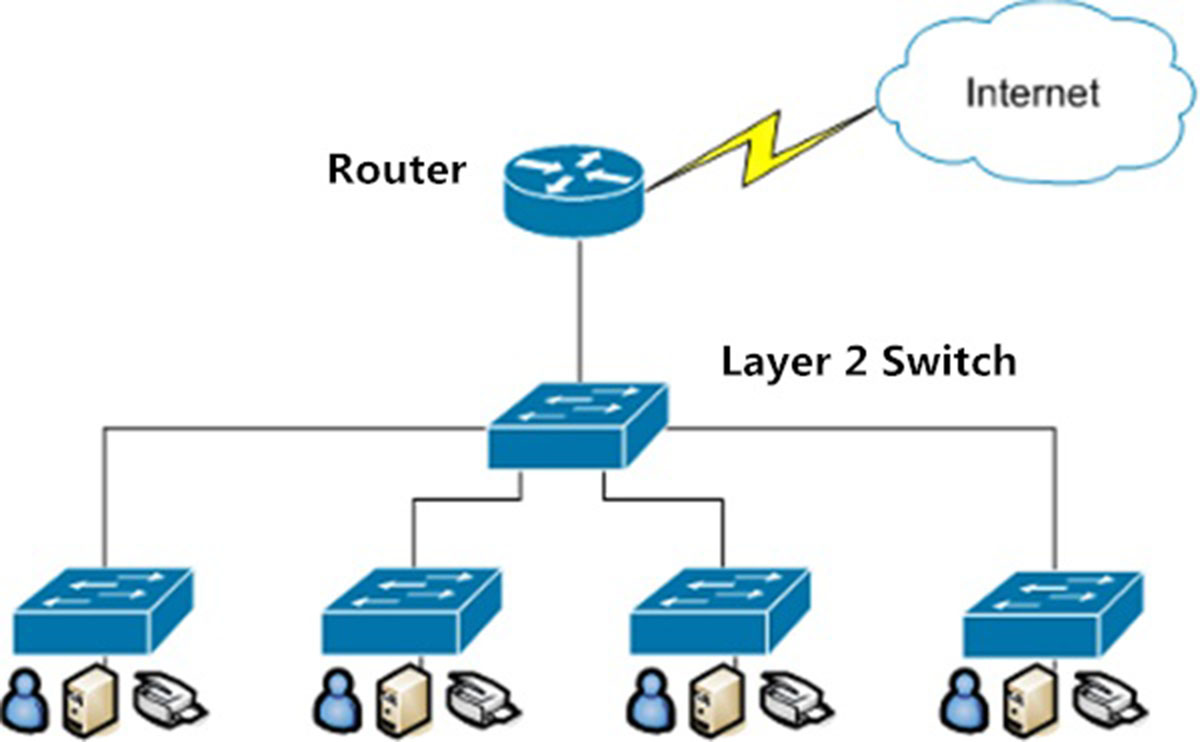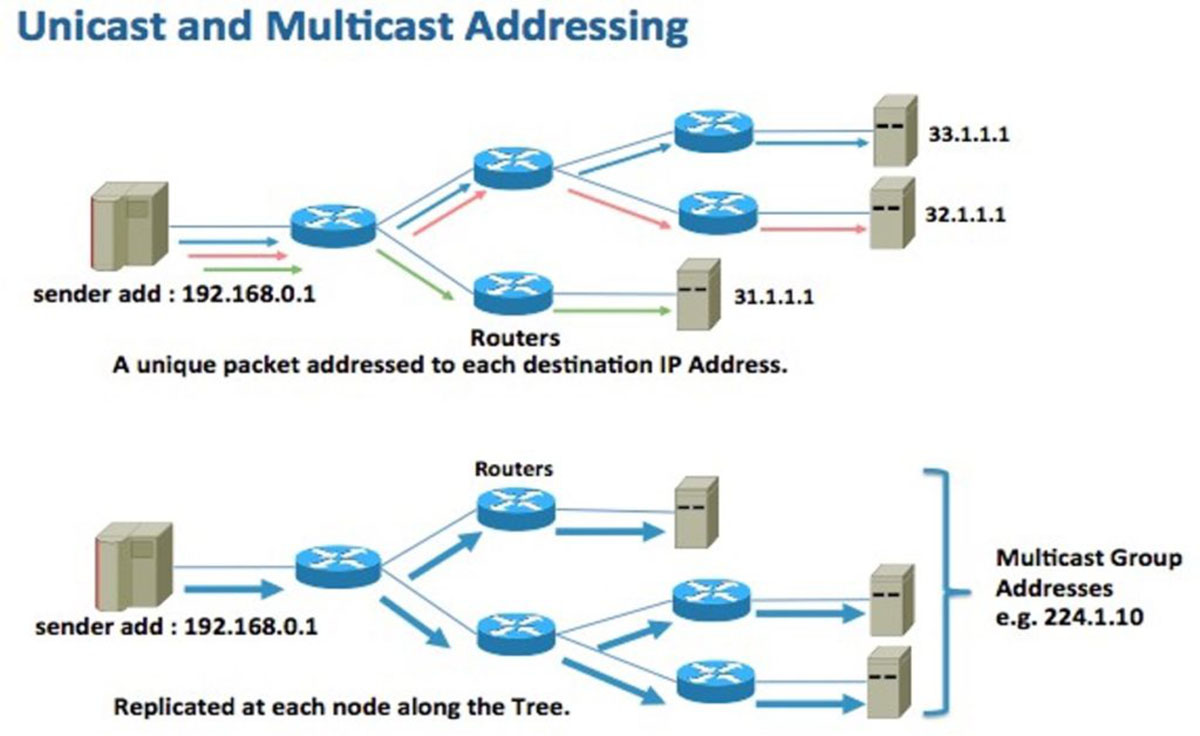Introduction
When it comes to networking, assigning a virtual IP address to a group of routers is a crucial aspect. This allows for improved network efficiency, load balancing, and redundancy. Virtual IP, or VIP, is an IP address that is not associated with a specific physical device but rather with a logical entity, such as a group of routers.
The assignment of a virtual IP to a group of routers enables seamless failover, increased network availability, and efficient utilization of network resources. By utilizing virtual IP, organizations can ensure uninterrupted network connectivity and minimize the impact of a single point of failure.
There are several protocols designed to assign a virtual IP to a group of routers. Each protocol has its own unique features and advantages, catering to different network requirements. In this article, we will explore the various protocols used for assigning a virtual IP and compare their functionalities.
By understanding the different protocols available, network administrators and IT professionals can make informed decisions based on their specific needs and goals. Whether it’s implementing load balancing, ensuring high availability, or optimizing network performance, selecting the right protocol is crucial in achieving these objectives.
So, join us as we delve deeper into the world of virtual IP assignment protocols and explore the functionalities and benefits they provide. From DHCP to HSRP, VRRP, and GLBP, we will examine each protocol to help you understand which one is best suited for your networking needs.
Virtual IP and its Importance
In modern network environments, the concept of a virtual IP (VIP) plays a vital role in ensuring efficient network operations. A virtual IP is an IP address that is not directly associated with a specific physical device but rather assigned to a logical entity, such as a group of routers.
The importance of virtual IP lies in its ability to provide enhanced network availability, load balancing, and failover capabilities. By assigning a virtual IP to a group of routers, organizations can distribute network traffic evenly across multiple devices. This load balancing ensures that no single router becomes overwhelmed, leading to improved network performance.
Furthermore, virtual IP enables seamless failover in the event of a router failure. If one router within the group goes down, the virtual IP can be easily reassigned to another functioning router, ensuring uninterrupted network access for connected devices.
Additionally, virtual IP allows for efficient resource utilization. By distributing traffic across multiple routers, network administrators can fully utilize the capabilities of each device, maximizing network throughput and avoiding bottlenecks.
Beyond load balancing and failover, virtual IP also enables network redundancy. By assigning a virtual IP to a group of routers, organizations can ensure that there is no single point of failure in the network. This redundancy provides a higher level of reliability and minimizes the risk of downtime for critical network services.
In summary, virtual IP addresses are essential in modern networking environments. They enable load balancing, failover, and network redundancy, ensuring efficient resource utilization, improved network performance, and uninterrupted connectivity. By implementing virtual IP, organizations can create robust and resilient networks that meet the demands of today’s dynamic business environments.
Types of Virtual IP Assignments
There are several protocols available for assigning virtual IP addresses to a group of routers. Each protocol has its own unique approach and benefits. Let’s explore four popular types of virtual IP assignments:
1. Dynamic Host Configuration Protocol (DHCP): DHCP is commonly used to dynamically assign IP addresses to devices on a network. In addition to assigning IP addresses to individual devices, DHCP can also be utilized to assign a virtual IP to a group of routers. This allows for dynamic load balancing and failover, as the virtual IP can be reassigned to a different router if one becomes unavailable.
2. Hot Standby Router Protocol (HSRP): HSRP is a Cisco proprietary protocol that provides redundancy in a network by allowing multiple routers to work together as a single virtual router. It assigns a virtual IP address to the group of routers, with one router being elected as the active router and others as standby routers. In the event of the active router failure, one of the standby routers will take over the virtual IP, providing seamless failover.
3. Virtual Router Redundancy Protocol (VRRP): VRRP is an industry-standard protocol similar to HSRP, designed to provide redundancy and load balancing. It works by assigning a virtual IP address to a group of routers, with one router serving as the master and the others as backups. The master router handles the virtual IP traffic, while the backups are ready to take over if the master router fails.
4. Gateway Load Balancing Protocol (GLBP): GLBP is another Cisco proprietary protocol that combines the benefits of load balancing and redundancy. It assigns a virtual IP address to a group of routers, with one router acting as the active virtual gateway and the others as backup virtual gateways. GLBP uses a load balancing algorithm to distribute traffic among the routers and provides automatic failover capabilities.
These protocols offer different features and functionality depending on the network requirements. DHCP, HSRP, VRRP, and GLBP each have advantages in terms of load balancing, failover, and network redundancy. Network administrators must carefully evaluate their network needs and choose the appropriate protocol for their specific environment.
Dynamic Host Configuration Protocol (DHCP)
The Dynamic Host Configuration Protocol (DHCP) is a widely used protocol for dynamically assigning IP addresses to devices on a network. While DHCP is commonly associated with assigning IP addresses to individual devices, it can also be used to assign a virtual IP to a group of routers, enabling dynamic load balancing and failover.
In a DHCP-based virtual IP assignment, a pool of virtual IP addresses is created. When a router within the group starts up or requires a new IP address, it sends a DHCP request to the DHCP server. The server then selects an available virtual IP address from the pool and assigns it to the router. This process allows for the distribution of network traffic, avoiding overloading any single router and improving network performance.
One of the advantages of using DHCP for virtual IP assignment is its flexibility. As routers join or leave the group, the virtual IP can be easily reassigned dynamically. This ensures that the virtual IP always points to an available and functioning router, mitigating the risk of downtime and improving network reliability.
DHCP also provides the ability to specify a lease duration for the virtual IP addresses. This lease duration defines how long a router can retain the assigned virtual IP before it needs to be renewed. By setting an appropriate lease duration, administrators can control IP address allocation and efficiently manage their network resources.
In addition to load balancing, DHCP-based virtual IP assignment allows for failover capabilities. If a router in the group becomes unavailable, the virtual IP can be released from the failed router and reassigned to another router in the group. This failover process is seamless and transparent to the devices connected to the network, ensuring uninterrupted network access.
It’s important to note that DHCP-based virtual IP assignment may require additional configuration and management compared to other protocols. Administrators need to ensure that the DHCP server is properly configured with the pool of available virtual IP addresses and that routers are set up to request and handle DHCP assignments correctly.
In summary, DHCP is a flexible and widely used protocol for assigning virtual IP addresses to a group of routers. It enables dynamic load balancing, failover capabilities, and efficient resource utilization. DHCP-based virtual IP assignment is beneficial in environments where network traffic distribution needs to be flexible and adaptable to changing network conditions.
Hot Standby Router Protocol (HSRP)
The Hot Standby Router Protocol (HSRP) is a Cisco proprietary protocol that provides redundancy and failover capabilities in a network. HSRP allows multiple routers to work together as a single virtual router, assigning a virtual IP address to the group of routers.
In an HSRP configuration, one router is elected as the active router, while the others function as standby routers. The active router assumes the responsibility for forwarding traffic and responding to network requests using the virtual IP address. The standby routers monitor the active router’s status and quickly take over if the active router fails.
HSRP works by using a priority system to determine which router becomes the active router. The router with the highest priority within the group becomes the active router, while the second highest becomes the standby router. Administrators can manually set the priority or use default settings. If routers have the same priority, additional criteria, such as the router’s IP address, are used to break the tie.
HSRP allows for seamless failover in the event of a router failure. If the active router becomes unavailable, one of the standby routers assumes the active role and begins forwarding traffic using the virtual IP address. This failover process is almost instantaneous and transparent to devices on the network, ensuring uninterrupted network access.
One of the benefits of HSRP is its ability to provide network redundancy. By having multiple routers working together as a virtual router, HSRP eliminates any single point of failure. If a router within the HSRP group fails, the remaining routers can still handle network traffic and maintain connectivity using the virtual IP address.
HSRP can also balance the network load among the routers within the group. By default, all routers are actively forwarding traffic, but only the active router responds to requests using the virtual IP address. This load balancing mechanism ensures that network traffic is distributed evenly among the routers, optimizing network performance.
It’s important to note that HSRP is a Cisco proprietary protocol, meaning it may not be compatible with non-Cisco devices. If interoperability with other vendors’ equipment is a concern, industry-standard protocols like Virtual Router Redundancy Protocol (VRRP) may be preferred.
In summary, HSRP provides redundancy, failover capabilities, and load balancing in a network by allowing multiple routers to work together as a virtual router. It assigns a virtual IP address to the group of routers and ensures uninterrupted network access in the event of a router failure. HSRP is a popular choice for Cisco networks looking to enhance network availability and reliability.
Virtual Router Redundancy Protocol (VRRP)
The Virtual Router Redundancy Protocol (VRRP) is an industry-standard protocol designed to provide network redundancy and failover capabilities. Similar to the Hot Standby Router Protocol (HSRP), VRRP allows multiple routers to work together as a virtual router, assigning a virtual IP address to the group.
In a VRRP configuration, routers are grouped into a VRRP group, with one router being elected as the master and the remaining routers as backups. The master router assumes the responsibility of forwarding network traffic, while the backup routers are ready to take over if the master router becomes unavailable.
VRRP employs a priority system to determine which router becomes the master router. The router with the highest priority within the group assumes the master role. Administrators can manually set the priority or use default settings. If routers have the same priority, additional criteria, such as the router’s IP address, can be used to break the tie.
VRRP provides seamless failover in the event of a router failure. If the master router becomes unavailable, one of the backup routers takes over the master role and starts forwarding traffic using the virtual IP address. This failover process is transparent to the devices connected to the network, ensuring uninterrupted network access.
One of the advantages of VRRP is its interoperability with different vendors’ equipment. Being an industry-standard protocol, VRRP is supported by various networking devices, making it a preferred choice for network environments with diverse equipment from different manufacturers.
Like HSRP, VRRP also enhances network reliability by providing network redundancy. If a router within the VRRP group fails, the remaining routers continue to handle network traffic and maintain connectivity using the virtual IP address. This redundancy ensures minimal downtime and improves the availability of network services.
VRRP also offers load balancing capabilities. By default, all routers in the VRRP group share the network traffic load. This distribution of traffic ensures optimal utilization of resources across the routers, preventing any single router from becoming overloaded. However, it’s important to note that VRRP load balancing is based on a basic round-robin approach and may not provide advanced load balancing features.
In summary, VRRP is an industry-standard protocol that provides network redundancy, failover capabilities, and load balancing. By allowing multiple routers to work together as a virtual router and assigning a virtual IP address, VRRP ensures network availability and seamless failover in the event of router failures. Its interoperability with different vendors’ equipment makes VRRP a widely used protocol in diverse network environments.
Gateway Load Balancing Protocol (GLBP)
The Gateway Load Balancing Protocol (GLBP) is a proprietary Cisco protocol that combines the benefits of load balancing and redundancy in a network. GLBP assigns a virtual IP address to a group of routers, allowing them to collectively function as a virtual gateway.
In a GLBP configuration, one router is designated as the active virtual gateway (AVG), while the others serve as backup virtual gateways (BVGs). The AVG handles the forwarding of traffic for the virtual IP address, while the BVGs are ready to assume the AVG role if necessary.
One of the key advantages of GLBP is its load balancing mechanism. By default, all routers in the GLBP group actively share the load of network traffic, unlike other protocols where only the active router forwards traffic. GLBP uses a hash algorithm based on the source and destination IP addresses to determine which router within the group will handle specific traffic flows. This ensures that network traffic is evenly distributed across multiple routers, optimizing network performance and preventing individual routers from becoming overwhelmed.
In addition to load balancing, GLBP provides redundancy. If the AVG fails, one of the BVGs is elected as the new AVG, seamlessly taking over the virtual IP address and continuing the forwarding of traffic. This failover process is transparent to devices on the network, ensuring uninterrupted connectivity.
GLBP also offers a feature called “forwarder weighting,” which allows administrators to manually control the proportional load distribution among routers within the GLBP group. By adjusting the weight assigned to each router, administrators can fine-tune the load balancing to suit the specific network requirements.
Another notable feature of GLBP is its ability to provide automatic ARP replies. Unlike other protocols where only the active router responds to ARP requests for the virtual IP address, GLBP allows all routers within the group to reply. This prevents ARP cache issues in devices connected to the network, improving overall network stability.
It’s important to mention that GLBP is a Cisco proprietary protocol and may not be compatible with non-Cisco devices. If interoperability with different vendors is a concern, industry-standard protocols like Virtual Router Redundancy Protocol (VRRP) can be considered.
In summary, GLBP is a Cisco proprietary protocol that combines load balancing and redundancy in a network. By assigning a virtual IP address to a group of routers and utilizing a load balancing algorithm, GLBP optimizes network performance and ensures high availability. With automatic failover, fine-tuned load distribution, and automatic ARP replies, GLBP is a powerful solution for organizations looking to enhance their network’s efficiency and reliability.
Comparing and Contrasting the Protocols
When it comes to assigning virtual IP addresses to a group of routers, several protocols offer unique functionalities and benefits. Let’s compare and contrast the protocols discussed, namely Dynamic Host Configuration Protocol (DHCP), Hot Standby Router Protocol (HSRP), Virtual Router Redundancy Protocol (VRRP), and Gateway Load Balancing Protocol (GLBP).
DHCP: DHCP is primarily used for dynamically assigning IP addresses to individual devices on a network. However, it can also be utilized for assigning virtual IP addresses to a group of routers. DHCP provides dynamic load balancing and failover capabilities, allowing the virtual IP to be reassigned to different routers as needed. It offers flexibility in IP address allocation and lease control, making it suitable for environments with changing network conditions.
HSRP: HSRP is a Cisco proprietary protocol that enables multiple routers to function as a single virtual router. It assigns a virtual IP address to the group and elects one router as the active router and the others as standby routers. HSRP offers seamless failover and network redundancy, ensuring uninterrupted network access. However, it is limited to Cisco devices and may not be compatible with other vendors’ equipment.
VRRP: VRRP is an industry-standard protocol that provides similar functionalities to HSRP. It allows multiple routers to work together as a virtual router, assigning a virtual IP address. VRRP also offers failover capabilities and network redundancy. It is interoperable with different vendors’ equipment, making it a preferred choice for heterogeneous network environments.
GLBP: GLBP is a Cisco proprietary protocol that combines load balancing and redundancy. It assigns a virtual IP address to a group of routers and distributes network traffic across multiple routers using a load balancing algorithm. GLBP provides both load balancing and failover capabilities, ensuring efficient resource utilization and high availability. All routers in the GLBP group actively participate in forwarding traffic, unlike other protocols where only the active router handles traffic. However, GLBP is limited to Cisco devices.
When comparing these protocols, several factors should be considered based on the network requirements:
- Compatibility: DHCP, VRRP, and GLBP support multiple vendors’ equipment, whereas HSRP is limited to Cisco devices.
- Load Balancing: GLBP offers active load balancing, while DHCP, HSRP, and VRRP distribute traffic based on an active-standby model.
- Failover: DHCP and VRRP offer dynamic failover capabilities, while HSRP and GLBP provide seamless failover within the group.
- Redundancy: HSRP, VRRP, and GLBP provide network redundancy, ensuring uninterrupted connectivity in case of router failures.
- Flexibility: DHCP offers flexibility in IP address allocation and lease control, making it suitable for dynamic network environments.
By carefully considering these factors and evaluating specific network requirements, administrators can select the most appropriate protocol to ensure efficient load balancing, failover capabilities, and network redundancy.
Conclusion
Assigning a virtual IP address to a group of routers is crucial for efficient network operations, load balancing, and redundancy. In this article, we explored several protocols commonly used for virtual IP assignment, including DHCP, HSRP, VRRP, and GLBP.
DHCP enables dynamic load balancing and failover by assigning virtual IP addresses to routers. It offers flexibility in IP address allocation and lease control, making it suitable for environments with changing network conditions.
HSRP and VRRP provide network redundancy and seamless failover capabilities. They allow multiple routers to work together as a virtual router, with one router serving as the active router and others as backups. While HSRP is a Cisco proprietary protocol, VRRP is an industry-standard protocol compatible with various vendors’ equipment.
GLBP combines load balancing and redundancy. It utilizes a load balancing algorithm to distribute network traffic across multiple routers and provides seamless failover. GLBP is also a Cisco proprietary protocol.
When selecting a protocol, network administrators must consider factors such as compatibility with existing equipment, load balancing requirements, failover capabilities, and the need for network redundancy. Each protocol has its own strengths and limitations, and the choice depends on the specific network environment and goals.
In conclusion, selecting the right protocol for virtual IP assignment is crucial in optimizing network performance, ensuring high availability, and improving resource utilization. Understanding the functionalities and benefits of DHCP, HSRP, VRRP, and GLBP empowers administrators to make informed decisions and implement the most suitable virtual IP assignment protocol for their networks.

























